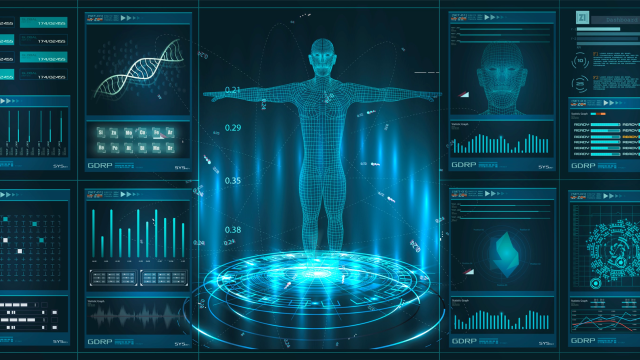Kao and PFN Co-Develop Virtual Human Body Generative Model
Companies to evaluate statistical model that estimates over 1,600 attributes related to health, lifestyle and more
2022.02.28
TOKYO – February 28, 2022 – Kao Corporation (Kao) and Preferred Networks, Inc. (PFN) have built a prototype for the Virtual Human Body Generative Model, a statistical model that can estimate data about an individual’s body, lifestyle, personality, preferences and more. The companies plan to commercialize the model after evaluating its applicability with collaborating companies. With PFN’s cooperation, Kao will prepare for a new digital platform business to provide the Virtual Human Body Generative Model with an application programming interface (API) for third parties.

The Virtual Human Body Generative Model covers a comprehensive set of over 1,600 attributes related to the body such as health check results, diet, exercise, sleep, personality traits, preferences, stress and menstruation. Based on the input data, the model statistically predicts missing data points as output. Each third-party developer can freely define input and output data points.
In developing the Virtual Human Body Generative Model, PFN combined multiple diverse datasets, each consisting of up to hundreds of attributes, to train the model. PFN has created a unique trial-and-error process to handle missing attributes and qualitative differences between the original datasets, and successfully maintained prediction accuracy of a wide range of attributes. PFN and Kao plan to increase the number of attributes to tens of thousands in the future.
Examples of attributes currently covered by the Virtual Human Body Generative Model include cognitive function, age, sex, personality traits, mental health status/depression, blood test results, physical build, physical composition, sleep, stress/fatigue, immune measures, vascular function, feeling of happiness, diet/nutrition, hand surface infection barrier function, motor function, productivity, hair loss, hair quality, skin conditions, sugar metabolism, scalp microbiome, gut microbiome, menstruation, menopause, body odor, and overactive bladder. Kao or PFN do not collect the model’s input and output data for secondary use. The model does not require personal information that identifies individual end users.
With PFN’s support, Kao plans to provide the Virtual Human Body Generative Model to collaborating companies and research institutions through an API, which will help them propose new value-added to their end users as well as build hypotheses. Possible applications of the new model are shown below. Kao and PFN expect collaborating partners to develop other innovative applications as well.
Example 1: Visceral fat
While CT scan is currently required for measuring visceral fat, the Virtual Human Body Generative Model can statistically estimate visceral fat level based on health check results and other available data. The model can also estimate data other than visceral fat based on the input, which can help companies suggest optimal solutions that are specifically tailored to the end user’s lifestyle, exercise and diet.
Example 2: What-if scenarios
The Virtual Human Body Generative Model can show what-if scenarios based on hypothetical data. For example, the user can enter an individual’s weight 2 kilograms less than the actual weight to see how different other items would be, which can help them set highly personalized fitness goals.
The Virtual Human Body Generative Model was built under Kao and PFN’s shared belief that the key to maintaining good quality of life and physical health in the current age of longevity is highly personalized wellness management based on a detailed understanding of one’s own body, health, lifestyle, personality, preferences and other related factors. Collecting full detail on such factor and finding effective solutions out of them, however, would be time-consuming and physically, psychologically and financially burdensome. To solve this issue, the two companies have combined Kao’s extensive research assets in human body, psychology and lifestyle with PFN’s technological expertise in computer science and deep learning in particular and built the Virtual Human Body Generative Model. The model is a key component of the Digital Life Platform outlined in Kao’s mid-term business plan, K25.
Kao and PFN have completed building the prototype of the Virtual Human Body Generative Model, and plan to put it into practical use in 2022. In addition, Kao plans to launch its new digital platform business in early 2023, in which the company provides the model through an API with PFN’s support. Going forward, the companies plan to grow the business as they give access to the Virtual Human Body Generative Model to new partners and help them provide various lifecare solutions to their customers, thereby contributing to their health and well-being.
“The Virtual Human Body Generative Model is a highly versatile statistical model that wouldn’t have been a possibility without Kao’s extensive insight in human body and lifestyle and PFN’s advanced technologies for deep learning and generative model,” said Hiroshi Maruyama, Project Professor at Research into Artifacts, Center for Engineering at the University of Tokyo, Kao’s Executive Fellow and PFN Fellow. “We look forward to collaborating with new partners and seeing novel applications of the Virtual Human Body Generative Model.”
Note: The Virtual Human Body Generative Model is not a medical device and is not intended to diagnose or prevent any diseases. The intended use of the model is to provide suggestions for users to maintain or improve health.
